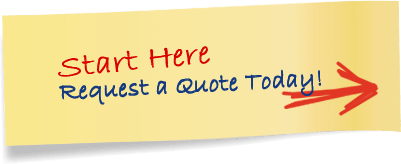
When it comes to web design, trends can change rapidly so it’s important to keep up with the latest optimization techniques. Traditionally, some designers have opted to give the user many clickable options to help them find the information they’re looking for, but this might not always be the best way to go.
The decision of whether to use scrolling or clicking is one that web designers must make on a daily basis, and each site will have unique needs that might call for a specific approach. That being said, it’s important to study and understand what the data tells us about the effectiveness of long scrolling versus clicking:
Length of Scroll
According to a report released by ClickTale back in 2007, 91% of user page views were long enough to contain scroll bar and 76% of those users actually scrolled to some extent. While only 22% of users actually scrolled all the way to the bottom of the page, the report concluded that users were equally likely to scan the entire web page, regardless of the page length.
Testing Efficiency
In 2010, Elastic Path performed a simple A/B test on the checkout page for the Official Vancouver 2010 Olympic Store. In the test, 50% of traffic was directed to the original, “out-of-the-box” checkout page while the other 50% was redirected to a new, single-page checkout URL.
While the experiment ultimately contained a total of 606 transactions, the winner was clear after just 300. The single-page checkout outperformed the “out-of-the-box” checkout by 21.8%, according to the Google Website Optimizer.
Another Interesting Point
In an article by Milissa Tarquini, which is titled, “Blasting the Myth of the Fold,” she points out that, “The most clicked on item on the TMZ homepage is the link at the very bottom of the page that takes users to the next page. Note that the TMZ homepage is often over 15000 pixels long.” This stat seems to back up the ClickTale report suggesting that page length has no bearing on the likelihood that users scan an entire web page.
Conclusion
While the data above might seem to suggest that it’s always better to opt for scrolling over clicking, we can’t be so quick to jump to that conclusion just yet. As every site offers different products and services, different techniques will be more suited to your company’s individual needs and preferences.
In an article entitled, “Why Scrolling is the New Click,” the author states that, “It seems that scrolling is better for usability. But clicking is better for analytics and search engines. As the designer, it’s your job to weigh what’s important.”
In addition, the author of the article, “Life Beyond the Fold – Scrolling vs Clicking,” says of a recent design project, “It was very important to guide users down the right path, without overloading them with information they have no interest in. Users will scroll, when given the proper guidance to do so.”
As with almost anything in this world, there are certainly pros and cons to both approaches. If your users require more guidance, you might require a multi-page design, but you might also find a great format to incorporate all your site’s important information on a single, user-friendly page. Ultimately, the choice is yours.










FOLLOW